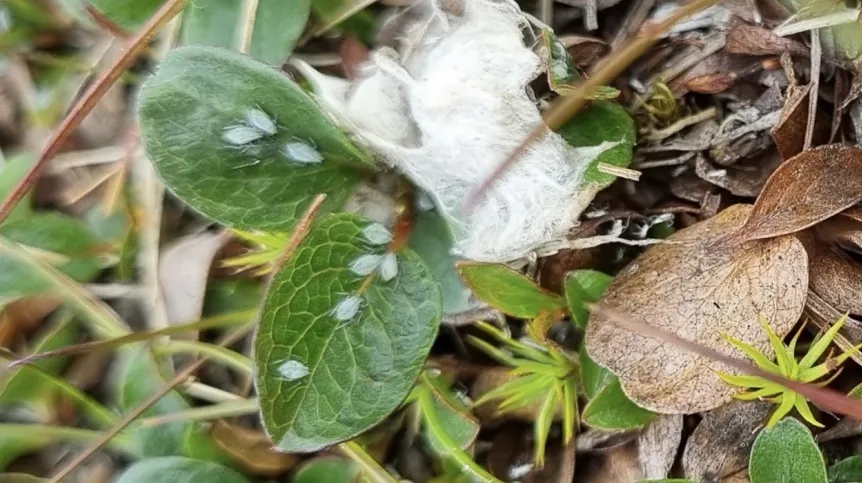
Two endemic species of aphids have been discovered in Svalbard. Some of them have a lot of body fat, which could indicate that the body is protected against low temperatures. A scientist from the University of Silesia investigates whether this is really the case and whether it is a repeatable trait.
Aphids, especially those from northern areas, are the topic of interest for Professor Karina Wieczorek, an entomologist from the Faculty of Natural Sciences of the University of Silesia in Katowice. In recent years, she has studied arctic aphids from Svalbard.
'Every gardener and anyone who is interested in plants knows what an aphid looks like. In our climate, aphids even manifest their presence, for example, by feeding on roses in colonies. In polar conditions, although we know that aphids are there, you have to work really hard to find them, spending long hours on your knees rummaging through the plants,’ she says.
So far two endemic species of aphids have been discovered in Svalbard. These are Acyrthosiphon svalbardicum and Sitobion calvulum, which are strictly monophagous meaning that they feed only on one specific plant species. They are also distinguished by their place of occurrence - they are the northernmost aphids in terms of latitude, compared to other Arctic regions.
Professor Wieczorek focuses primarily on studying the reproductive system of Svalbard aphids. She wants to know the differences in its construction and functioning.
'Aphids reproduce cyclically: in the spring the first female family founders appear, which then give birth to the next generation of parthenogenetic females. It is only in autumn that the sexually reproducing generation - oviparous females and males - appears. On Svalbard, the life cycle of aphids is significantly shortened, because the growing season there is extremely short, which is why there are usually only two generations - female founders and oviparous females and males. There are practically no wingless and winged parthenogenetic females, so well known to us from temperate climate conditions, that reproduce in the summer months. Therefore, these species are an ideal object of research on reproductive system,’ she says.
One of the differences between Svalbard aphids and aphids found in temperate climates is the higher content of fat in the insects' bodies.
'We already know that Acyrthosiphon svalbardicum aphids have a lot of fat body - when I prepared them, the fat would simply flow out of them. Interestingly, this extra fat does not translate into the size of the insects. In my current research, I am checking whether this fat really protects the body against low temperatures, as is most often the case among animals, and whether this is a repeatable trait also for the second species of Svalbard aphids,’ Wieczorek adds.
The scientist will also test the microbiome of aphids, and more specifically - the bacteria that enable aphids to absorb nutrients in the form of amino acids. 'Knowing this aspect, I hope, will provide further answers to the question of how local aphids cope with the difficult conditions of the polar summer,’ she says.
The second area of Wieczorek's scientific interest related to aphids is researching invasive and alien species in botanical gardens, for example in the UK and Belgium. The biologist is looking for indications whether a large accumulation of exotic and foreign plants is an 'open door' to the development and spread of new species of aphids in a given place.
In this context, Professor Wieczorek recalls an interesting fact when, during her stay in Svalbard, she noticed an ornamental plant in a pot next to one of the houses, bought in a nearby store and brought there from Norway.
'As always and everywhere, I check plants out of curiosity. And to my great surprise, I found aphids! It was a polyphagous species popular on the European continent that can feed on a variety of plants. I collected as many of these aphids as I could, but I'm not sure whether they did not get into the environment from this plant or other plants bought in the local shop. In my opinion, those responsible for the transport and sale of non-native plants in Svalbard should carefully inspect the plants for the presence of insects, because it can result in the introduction of alien species into the natural habitat. Who knows, maybe these aphids will somehow adapt to the local conditions and in a few years we will observe them in the environment. Experimental studies conducted in polar conditions have already confirmed this possibility,’ Wieczorek says.
PAP - Science in Poland, Agnieszka Kliks-Pudlik
akp/ zan/ kap/
tr. RL













